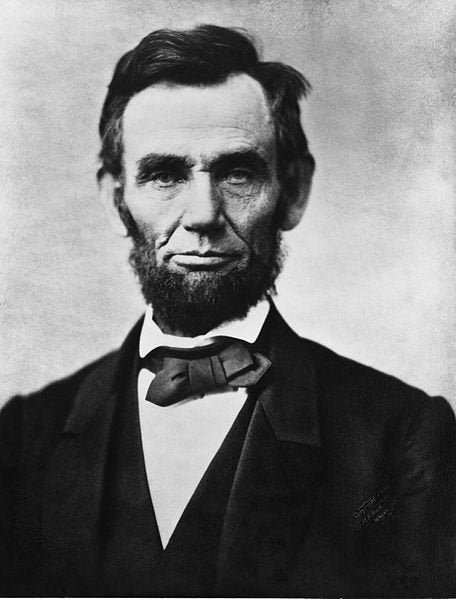
Was Abraham Lincoln one of the first people to use the playful ;) emoticon?
Though the text symbol for "winking," used in our emails, tweets, texts and instant messages, was officially introduced in 1982, the ;) appears in a copy of a speech President Lincoln delivered way back in 1862.
The New York Times wrote in 2009 that a newspaper specialist working for archival company Proquest had spotted a sideways "face" in one of Lincoln's speech transcripts, printed in the Times on August 7, 1862. The symbol appeared after the word "laughter."
The sentence in question reads thus:
“… but it is also true that there is no precedent for your being here yourselves, (applause and laughter ;) and I offer, in justification of myself and you, that I have found nothing in the Constitution against.”
(Visit the New York Times site to see a scanned copy of the speech containing the apparent emoticon.)
How is this possible? According to the Times, the "winky face" may have been the work of a typesetter, who would have been responsible for arranging the semicolon and single parenthesis bracket before the transcribed speech was printed. Experts found themselves split: Some suggested the semicolon could be attributed to grammar that was characteristic of the 1800s; others argued the use of a Linotype machine meant each key would have to be assembled, making it difficult to accidentally add extra characters and spaces.
Whether or not this ;) was meant to appear in Lincoln's speech, it is generally accepted that the birthday of emoticons is September 19th, 1982. In a email sent at 11:44 a.m. on that date, Carnegie Mellon University Professor Scott Fahlman explained to his students how he wanted them to use the symbols to distinguish between sarcasm and serious comments in digital communications, according to The Independent.
"I propose the following character sequence for joke markers: :-) Read it sideways," he wrote.
An excerpt from Fahlman's 1982 email is below, taken from the Carnegie Mellon Computer Science Department page:
Professor Fahlman also spoke with the New York Times about his thoughts on Honest Abe's possible emoticon. One explanation he came up with was that the typesetter was "having his own little joke."
Fahlman has admitted he's no fan of the new-fangled Emoji, or animated versions of emoticons. "I think they are ugly, and they ruin the challenge of trying to come up with a clever way to express emotions using standard keyboard characters," he said in a recent interview. "But perhaps that's just because I invented the other kind."
Do you think an emoticon was purposely inserted into President Lincoln's speech after the word "laughter"? Do you use Fahlman's modern emoticons in digital conversation? Sound off in the comments section of tweet us [@HuffPostTech]. Then read up on what other languages call the @ symbol, or check out Skype's integration of the emoticon's more humanistic counterpart, the Humoticon.